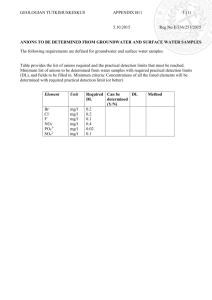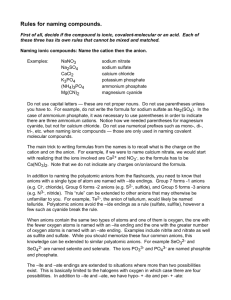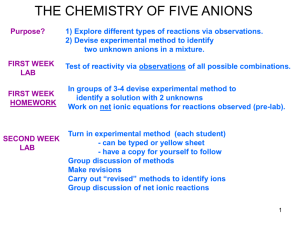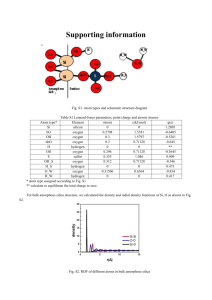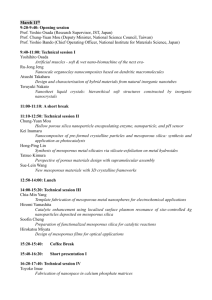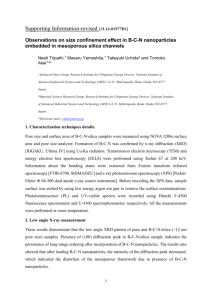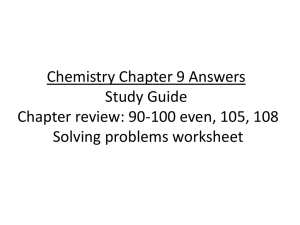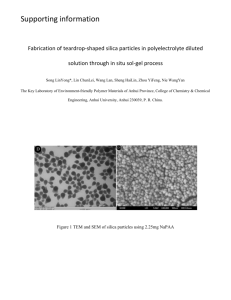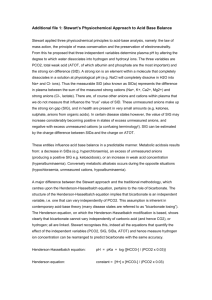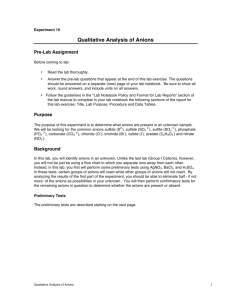Controlling the Crystalline Structure of Mesoporous Silica by
advertisement
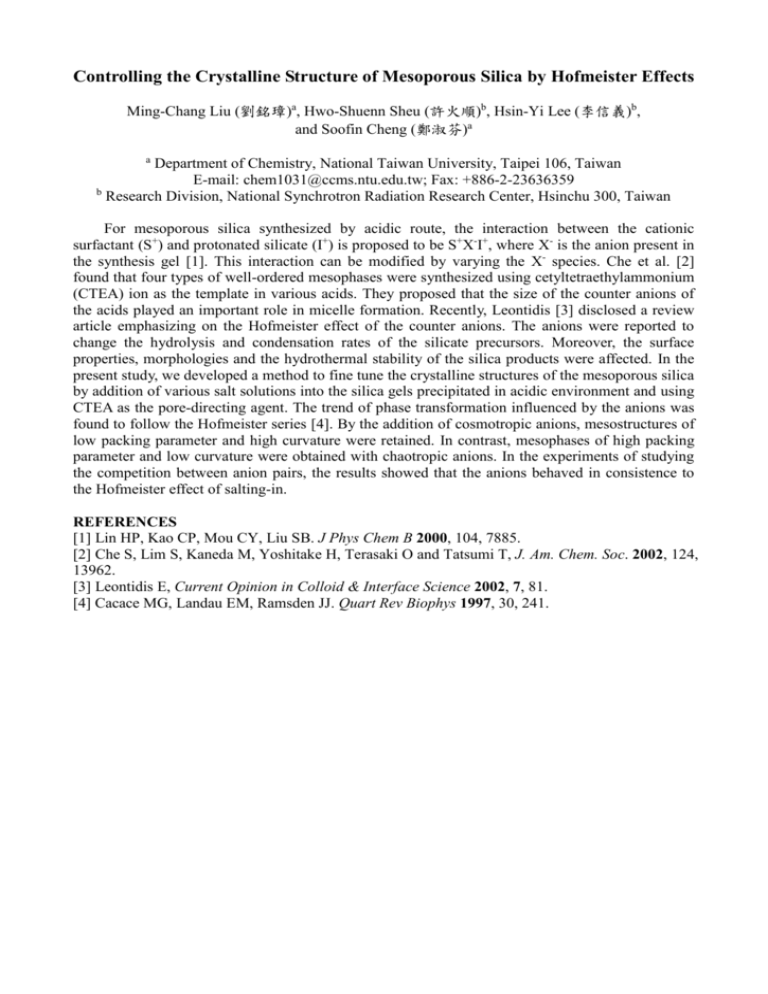
Controlling the Crystalline Structure of Mesoporous Silica by Hofmeister Effects Ming-Chang Liu (劉銘璋)a, Hwo-Shuenn Sheu (許火順)b, Hsin-Yi Lee (李信義)b, and Soofin Cheng (鄭淑芬)a a Department of Chemistry, National Taiwan University, Taipei 106, Taiwan E-mail: chem1031@ccms.ntu.edu.tw; Fax: +886-2-23636359 b Research Division, National Synchrotron Radiation Research Center, Hsinchu 300, Taiwan For mesoporous silica synthesized by acidic route, the interaction between the cationic surfactant (S+) and protonated silicate (I+) is proposed to be S+X-I+, where X- is the anion present in the synthesis gel [1]. This interaction can be modified by varying the X- species. Che et al. [2] found that four types of well-ordered mesophases were synthesized using cetyltetraethylammonium (CTEA) ion as the template in various acids. They proposed that the size of the counter anions of the acids played an important role in micelle formation. Recently, Leontidis [3] disclosed a review article emphasizing on the Hofmeister effect of the counter anions. The anions were reported to change the hydrolysis and condensation rates of the silicate precursors. Moreover, the surface properties, morphologies and the hydrothermal stability of the silica products were affected. In the present study, we developed a method to fine tune the crystalline structures of the mesoporous silica by addition of various salt solutions into the silica gels precipitated in acidic environment and using CTEA as the pore-directing agent. The trend of phase transformation influenced by the anions was found to follow the Hofmeister series [4]. By the addition of cosmotropic anions, mesostructures of low packing parameter and high curvature were retained. In contrast, mesophases of high packing parameter and low curvature were obtained with chaotropic anions. In the experiments of studying the competition between anion pairs, the results showed that the anions behaved in consistence to the Hofmeister effect of salting-in. REFERENCES [1] Lin HP, Kao CP, Mou CY, Liu SB. J Phys Chem B 2000, 104, 7885. [2] Che S, Lim S, Kaneda M, Yoshitake H, Terasaki O and Tatsumi T, J. Am. Chem. Soc. 2002, 124, 13962. [3] Leontidis E, Current Opinion in Colloid & Interface Science 2002, 7, 81. [4] Cacace MG, Landau EM, Ramsden JJ. Quart Rev Biophys 1997, 30, 241.
